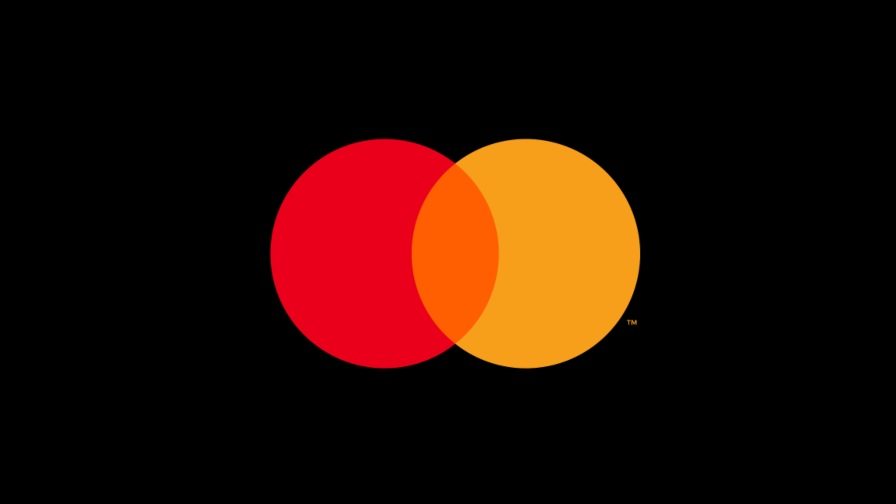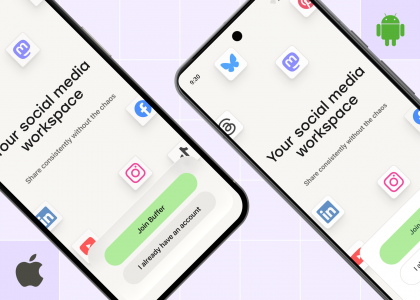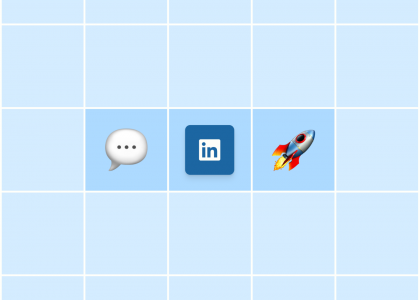At the Cannes Lions Festival 2022, Mastercard launched its first music album, “Priceless”. Yes, you read that right. On the face of it, one of the world’s largest payments and tech companies releasing a record might seem like a bizarre stunt at best. However, this album is a long time in the making and is the latest, calculated step in Mastercard’s hugely successful sonic branding strategy that continues to push the boundaries of digital marketing practices.
In a world where consumers are constantly being bombarded with constant messaging and clutter, it can be easier to tune out advertisements rather than to acknowledge them. Multisensory marketing opens the door for a unique opportunity to reach the minds and hearts of consumers. By tapping into all five senses, marketers can connect to their desired audience on a deeper level and develop more subconscious associations, such as trust and reliability.
Sonic branding is a critical extension of overall branding. It is not just about having nice background music or a jingle. It is the creation of comprehensive audio brand architecture. Just as a brand typically has a logo and a design system that people associate it with, marketers need to create a sonic brand identity that people can instantly recognize.
We spoke with Mastercard CMO Raja Rajamannar who has sparked and championed multisensory marketing for several years to understand how Mastercard built its sonic brand and curated the “Priceless” Album, and why this has been such a powerful marketing strategy.
The three levels of Mastercard’s sonic branding strategy
Sonic branding is an emerging concept within digital marketing but has its roots in traditional jingles. Mcdonald’s is a classic example with its instantly recognizable whistle. Indeed, this concept takes the time-old practice of jingles and elevates it to another level, as Rajamannar explains.
“We used to have jingles to create strong associations between a tune and the brand. Though that approach is unidimensional, jingles have been highly effective. Today, marketers need to go way beyond jingles.”
“At Mastercard, we strive to ensure that our brand is instantly recognizable and top of mind. Our sonic melody and overall audio strategy gives us the opportunity to extend our iconic symbol and create something even bigger that we can use to meet people where they are naturally, rather than being intrusive with annoying ads or pushing a brand message.”
Mastercard breaks down its sonic brand into three levels that needed to be carefully curated: The brand architecture, a sonic signature, and an acceptance sound. Each of these levels involves different iterations of the same melody.
Combined, these levels make up Mastercard’s sonic brand which has been recognized as the best audio brand in the world for three years running.
Level 1: The brand architecture
The key to building a recognizable sonic brand lies in consistency and adaptability. Mastercard is a global business. Its sonic brand needed to be heard within each of these markets and illicit a positive response. This required building an overarching melody. Rajamannar elaborates:
“At Mastercard, we created a comprehensive sonic brand architecture starting with the creation of a 30-second melody. This is the core DNA of the sonic brand, a collection and sequence of notes that create a tune that is, primarily, very pleasant.”
“This melody is part of every one of our ads, as the background or foreground music. It is also played at all Mastercard events and gatherings. We even made ring tones out of it, dozens of them, that anyone can download.”
“As such, the melody has been extremely well tested to make sure that it is validated by neurological studies, which found it to be evocative, memorable, and hummable. We worked with neuroscientist and music experts to make sure the sounds created positive emotions and reactions.”
Mastercard is also a highly localized company. Accordingly, the melody had to be versatile, adaptable, and appropriate to each location and its culture.
“We tested the melody around the world to create a sound that was adaptable to regions and worked across genres. People can relate to it and like it in any part of the world.”
Level 2: The sonic signature
Mastercard also wanted to ingrain this melody into the day-to-day lives of its audience. Accordingly, the team wanted to develop a shorter iteration of the melody that would be as recognizable as Intel’s sound logo, without losing the power the melody offered.
“What is unique in our signature sonic signature is its derivation from a melody. By maintaining a firm connection to its root melody, and thereby working together with the sonic melody, it reinforces our sonic identity.”
“Every ad of ours ends with this sonic signature. It’s the second level of sonic branding and we looked for more opportunities to populate it. For example, all the company laptops and PCs play the sonic signature when they start up.”
Level 3: The acceptance sound
Lastly, the third level is a further subset of Mastercard’s sonic melody which measures just over one second (1.3 seconds).
“It’s embedded into the physical and digital points of all interaction with Mastercard. We call this our acceptance sound. Every time a payment transaction goes through successfully, people will hear the reassuring sound of Mastercard. As of right now, our acceptance sound is incorporated into 235 million points of interaction around the world and moving forward strongly.”
This sound, although tiny, has huge power. 78% of customers prefer the acceptance sound and animation when shopping through in-store and digital channels; and there are 3.4 times strong assurance around trust, safety, and acceptance when this sound is used.
The “Priceless” Album: A unique sonic branding activation
 Mastercard decided to create its own music with the Mastercard melody subtly infused into it to create strong awareness for its sonic brand. It launched its first pop song, called “Merry Go Round,” in early 2020. At the Cannes Lions International Festival of Creativity 2022, Mastercard launched its first music album as the latest extension of its sonic brand. Rajamannar elaborates on why a payments and tech company most widely known for its credit cards would launch such a project.
Mastercard decided to create its own music with the Mastercard melody subtly infused into it to create strong awareness for its sonic brand. It launched its first pop song, called “Merry Go Round,” in early 2020. At the Cannes Lions International Festival of Creativity 2022, Mastercard launched its first music album as the latest extension of its sonic brand. Rajamannar elaborates on why a payments and tech company most widely known for its credit cards would launch such a project.
“As one of the world’s most iconic, recognizable brands, we introduced our first ever music album as a way for people to enjoy our brand through our collective passion for music.”
“Driving our commitment to connect people with their passions, we chose to partner and support ten emerging artists from around the world (including Michael Rice of the UK). Each of the artists integrated our sonic melody into their songs representing a range of genres and diverse interpretations.”
“Music connects, inspires, and uplifts us all. It is among the most popular global passions – it connects us all universally no matter your background. As we continue to build the equivalent of our visual brand logo and design system in the audio space, our album creates a significant moment for us to connect to people in a fun, culturally relevant way.”
Building a ‘glocalized’ sonic branding activation
Mastercard is a global brand. It offers services and connections to people in 210 countries and territories. As with any component of its brand architecture, this required Mastercard to consider how it could balance a consistent, globally recognized sonic brand with the need for local adaption. Rajamannar explains how Mastercard ensured its sonic brand was localized to the numerous cultures they operate within when recording “Priceless.”
“We worked closely with Executive Producer Niclas Molinder to find these exceptional, multitalented artists who represent the breadth and range of music that embody this album. We partnered with emerging global talent who span a variety of cultures, languages, and genres — this core element of the album’s identity makes it relevant to people of all diverse cultures. People from all over the globe can relate to and enjoy these songs, as well as expose others to types of music they otherwise may have never found. “
It was important for Mastercard to ensure the latest activation of its sonic branding strategy would advance its multisensory marketing strategy forward and allow it to keep its finger on the pulse with the latest technology and platforms for audience engagement.
“Our first ever music album is a way for us to take our sonic branding approach to the next level. People are engaging more with voice enabled devices – through wearables, Internet of Things – the album is part of our strategy to stand out and stay relevant in this medium.”
“What we have learned is that traditional marketing is a way of the past. We are finding innovative ways to connect with people and in this instance, by subtly integrating our sonic melody into music that consumers enjoy, we are adding to their experience rather than taking away from it. We are using this sonic DNA integration to build closer connections to those with a passion for music while staying authentic to the artists’ vision and style.”
Measuring for success
There are two key areas Mastercard studies when looking to track the success of the Priceless album activation and broader sonic branding strategy: a brand perspective and a business perspective. Rajamannar discusses each in turn:
“From a brand perspective, we have received validation that our sonic DNA is innovative and stands out against our brand peers (meaning we are catching consumers’ attention in an environment where it’s difficult to do so). We have been recognized as Best Audio Brand by Amp every year since we launched our sonic DNA.”
“Secondly, the business perspective. As mentioned, in just a few short years our sonic transaction sound is present at 235 million points of payment around the world. This rapid growth is incredibly exciting for us. When people use their Mastercard they are assured their transaction went through safely and securely.”
“When we think about benchmarks, we need to realize that what we’re doing is the first of its kind – this isn’t your typical jingle or sound logo. In a world with smaller screens and more audio-enabled devices, the sound is important to ensure the consumer knows your brand is present. By implementing our transaction sound around the world, we increased awareness and recognition for our brand and increase business success.”
Exploring the other senses
Mastercard is not solely focused on sonic branding. As a part of Mastercard’s overarching multisensory marketing strategy, Rajamannar elaborates on two further pillars: Touch, and taste.
“Our Touch Card is a poignant example of how we are using the sense of touch to make our business more inclusive. This aligns with our company mantra of “doing well by doing good.” Touch Card is not only beneficial for those who are blind and low sighted, but good for business. We know that impactful change needs to be sustainable for business and society.”
“Secondly, taste. We’ve created bespoke macarons in partnership with upscale retailer Laduree that represent our brand – red symbolizes passion and yellow symbolizes optimism. Also, the two circles mimic the look of our logo. By creating these unique culinary experiences, and having a taste associated with our brand, we’re able to strengthen our connection with consumers. We also have “Priceless Restaurant” in São Paulo, “Priceless With Estoril” in Mexico City and “Mastercard Bistro” at Rome International Airport; and partner with some of the most celebrated chefs around the world.”

Rajamannar has sparked and championed Mastercard’s overarching multisensory marketing with numerous other sense-based activations over the past three years. If the payments and tech company can turn a meringue into an impactful marketing strategy, it’s clear no sense is safe.
For Mastercard, the future of marketing is about connecting with consumers in new, ground-breaking ways that resonate and stand out with people – and to do so, sonic branding and multisensory marketing will play a huge role.
Subscribe to the ClickZ newsletter for insights on the evolving marketing landscape, performance marketing, customer experience, thought leadership, videos, podcasts, and more.
Join the conversation with us on LinkedIn and Twitter.
The post Mastercard’s multisensory marketing: A masterclass in sonic branding appeared first on ClickZ.






